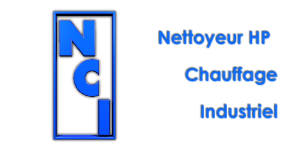Enterprise information system Wikipedia
The purpose of an information system is to turn raw data into useful information that can be used for decision making in an organization. Many information systems are designed to support a particular process within an organization or to carry out very specific analysis. ERP software is a large suite of integrated applications that manage everyday business processes and automate back-office functions. It’s designed to centralize and optimize operations with its connectivity while reducing manual labor.

Implement local and international tools, including cloud multi-currency, multi-language and multi-company management. Although “enterprise” is the first word in ERP, it’s not exclusively for large companies. It serves all sizes and can grow with your company as you add more workers, machinery, departments and locations.
What Are the 2 Main ERP Applications?
Enterprise information systems provide a technology platform that enables organizations to integrate and coordinate their business processes on a robust foundation. In contrast, there are a number of specialized information systems that have been specifically designed to support a particular process within an organization or to carry out very specific analysis tasks. For example, enterprise resource planning (ERP) is an information system used to integrate the management of all internal and external information across an entire organization. Another example is a geographic information system (GIS), which is used to manage and analyze all types of geographical data.
You can learn more about which functionalities your business would benefit from with our ERP requirements template or comparison guide. Manage equipped BI tools that mix data with visual analytics to create actionable business insights. Evaluate purchase orders, requisitions, invoices, contracts and supplier performance with real-time information. Gather, study and obtain every sourcing data point in one system while carrying out automatic and manual sequences to govern all procurement file types. In essence, the machine learning tools offer buffer-level adjustments with lead time on stock transfer ingredients to guarantee inventory is kept at satisfactory values while reducing capital.
Inventory and SCM
Some companies seek to develop their gateways or use direct payment methods to avoid third-party intermediaries. Considerable variation exists depending on specific company guidelines and requirements. The good news is that creating a tailor-made solution to meet your business’s unique needs is always feasible while still being safe, transparent, and efficient. Sifting through massive amounts of information and statistics to arrive at sound conclusions is frequently tedious and time-consuming. Using data mining, benchmarking, and statistical algorithms to find trends and make predictions, Business Intelligence (BI) software helps streamline this process and give better outcomes to the company management.
Business intelligence apps are aimed at data analysis and the provision of accurate information for effective decision-making. This practice helps companies reduce expenses, learn what works best, and reveal the actions that should be replaced or eliminated. Business intelligence apps often include business analysis, data mining and visualization tools with a robust infrastructure. Companies can adjust the ERP system to respond to the needs of different industries such as healthcare, retail, finance, law, architecture, hospitality, etc. Within a given sector, it is possible to customize ERP to create account payables, reports and timesheets to facilitate routine tasks in the organization.
Enterprise Information System (EIS)
As previously highlighted, enterprise information management seeks to increase efficiency, security, and the effectiveness of data use, as well as enhance transparency. For small operations with one location, a filing cabinet with a lock may be all that’s needed. But a more comprehensive and customizable system is usually needed for a large company with branches and business lines spanning borders with different regulatory regimes for privacy and data use. There’s a good chance you already have some information systems infrastructure in place—you just need to refine it. For example, you may have plenty of customer data in a data warehouse but lack customer relationship management (CRM) software. Nowadays, this doesn’t just mean your cubicle’s desktop or laptop computer—we have computers at our fingertips much of the time we aren’t typing away at our keyboards.

For a birds-eye perspective of the situation and guidance on where to make adjustments to improve outcomes, it’s hard to beat. While this pyramid model is useful, some information systems might be used at different levels. In the case of the bookstore chain, the sales information from the transaction processing enterprise information systems examples makes it all the way to the top in order to identify which products are doing well and which stores are doing better than others. Many people think of data as synonymous with information; however, information actually consists of data that has been organized to help answer questions and to solve problems.
Information systems
An enterprise information system (EIS) is any kind of information system which improves the functions of an enterprise business processes by integration. This means typically offering high quality of service, dealing with large volumes of data and capable of supporting some large and possibly complex organization or enterprise. An EIS is capable being used by all parts and all levels of an enterprise.
- Supply chain management refers to the management of supply chain activities in an effective and efficient way to provide a company with a strategic advantage.
- Another example is a geographic information system (GIS), which is used to manage and analyze all types of geographical data.
- In summary, EIS software package enables marketing executives to manipulate the data by looking for trends, performing audits of the sales data, and calculating totals, averages, changes, variances, or ratios.
- For example, suppose that a gaming company is considering a new casino in Pennsylvania (which has recently legalized slot machines).
At any given point, some slot machines are down, whether because a machine broke or ran out of money or somebody hit the jackpot. All these contingencies require immediate attention by a service attendant. In the past, service personnel strolled around looking for machines in need of fixing.
Information Systems: Definition, Concepts & Examples
The main objectives of collaboration systems are to facilitate communication and teamwork among the members of an organization and across organizations. One type of collaboration system, known as a workflow system, is used to route relevant documents automatically to all appropriate individuals for their contributions. To eliminate unnecessary processes and centralize work, they chose the Oracle NetSuite ERP system. Immediately, Fulton & Rourk was better able to identify accounting errors related to inventory, eliminate costs from employing third parties to evaluate their financial records, and better report financial positions.

In the last decade, however, some significant advances have been made in artificial intelligence—albeit in the area of game playing, where activities are generally governed by small sets of well-defined rules. But even the game-playing environment is sometimes complex enough to promote interesting developments. In 1997, for example, IBM’s Deep Blue—a specialized computer with an advanced chess-playing program—defeated the world’s highest-ranked player (Webopedia, 2011). Perform planned and unplanned maintenance tasks to boost production and allow technicians to locate, report and rectify malfunctions and emergencies. Maintenance planners can superintend critical and time-sensitive work throughout various procedures and spare parts to analyze costs, breakdown rates and damages.
Why your organization needs information systems
Frequently the term is used only to refer to very large organizations such as multi-national companies or public sector organizations. However, the term may be used to mean virtually anything, by virtue of it having become the latest corporate-speak buzzword. Enterprise information systems https://www.globalcloudteam.com/ provide a technological platform that enables organizations to integrate and coordinate their business processes on a robust foundation. An EIS is currently used in conjunction with customer relationship management and supply chain management systems to automate business processes.
Posted in: Software development
Leave a Comment (0) →